Added Value Quiz For You!
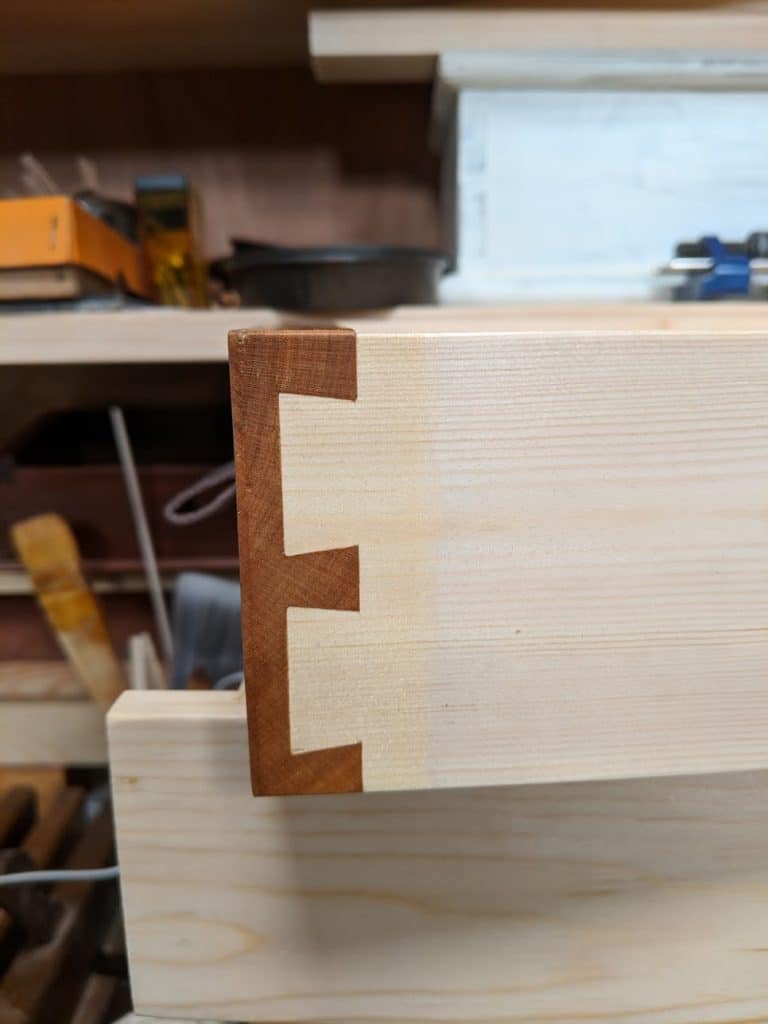
Finishing off making the two-drawer organiser and filming it too made the week special. Filming for me is never without its trials, not the least of which is the interruption my brain goes through after a lifetime of developing as near an uninterrupted flow to my work. I have been used to the momentary disruptions apprenticing brings and so too customers looking for answers. Managing staff and co-workers back then rarely stopped me mid-cut though. With filming that inevitably happens for a range of good reasons not the least of which is me calling a tenon a dovetail or a plane a spokeshave. I either get stopped through my own fault for one reason or another; sometimes I just forget where I am in the scheme of things. Wrong cuts cat lead to difficult or impossible edits and that reflects on the videographers who love a good outcome in their work just as much as I want in my work. Mid-cut interruptions do affect me because we seem to lose that moment important to expressing intent. Some projects take two or three weeks for us to work through and that’s before the editing even starts. Having made a prototype prior to that extends the time even though no filming takes place in that sphere of development.
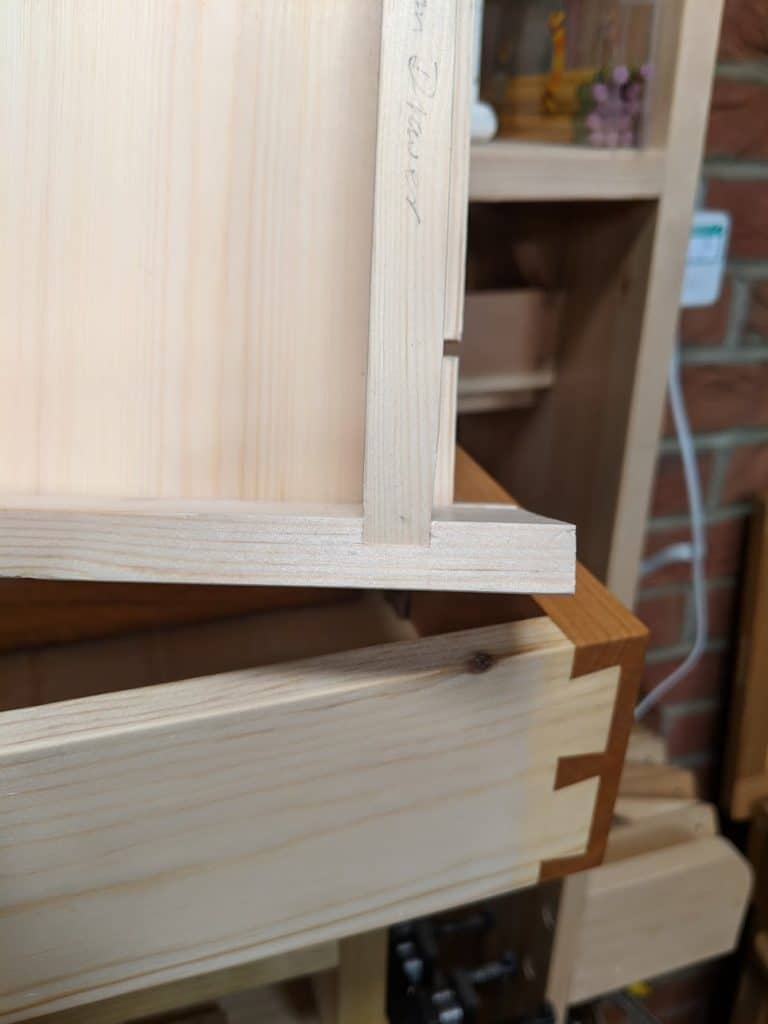
It’s a nice project as I think I said already. Compact, tidy, simple and practical. If you are thinking of taking the plunge into drawer making with a cabinet thrown in, the size is just right–not too small and not too large. Where I used hardwood for the drawer fronts you could just continue with pine throughout and it would look just as nice I think. I am also planning on one from hardwood throughout. A more modern take on the theme. I think I’ll vlog on that one.
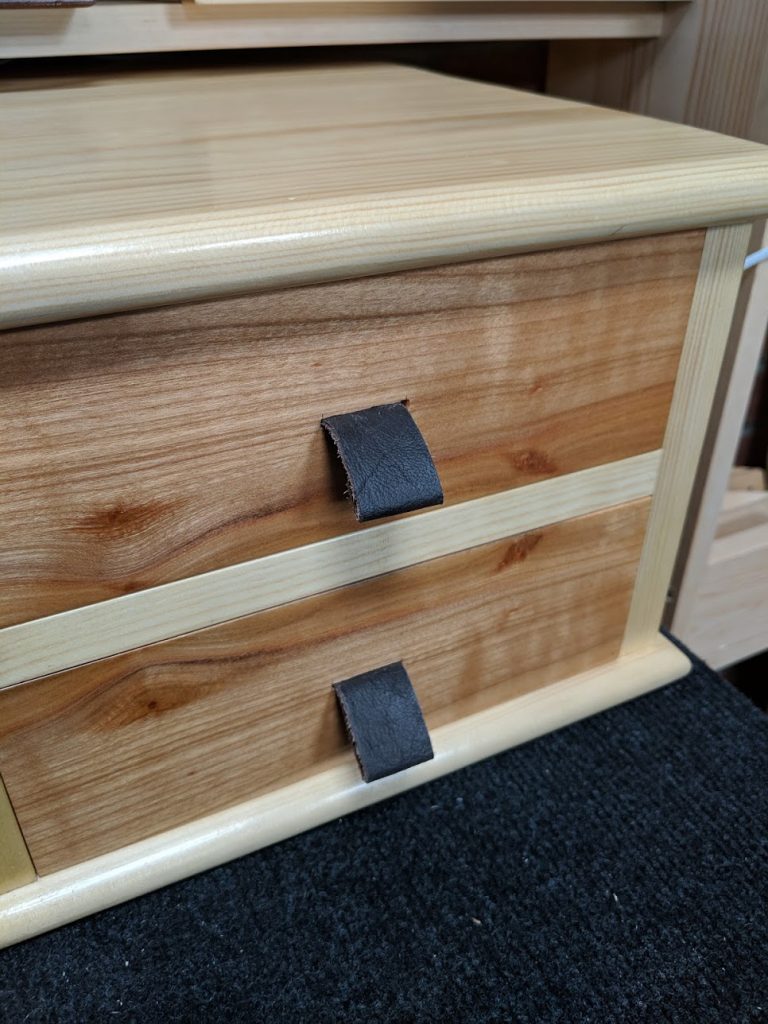
Making my original model two decades ago made it is just too handy to live without. I will use this second one too and will wonder how I lived without it within a few days I am sure. I daren’t tell you how many boxes, tills and drawers I have around my home, home workshop and at work. They are all full of my bits and pieces and you would be amazed that I pretty much know what’s inside most of them.
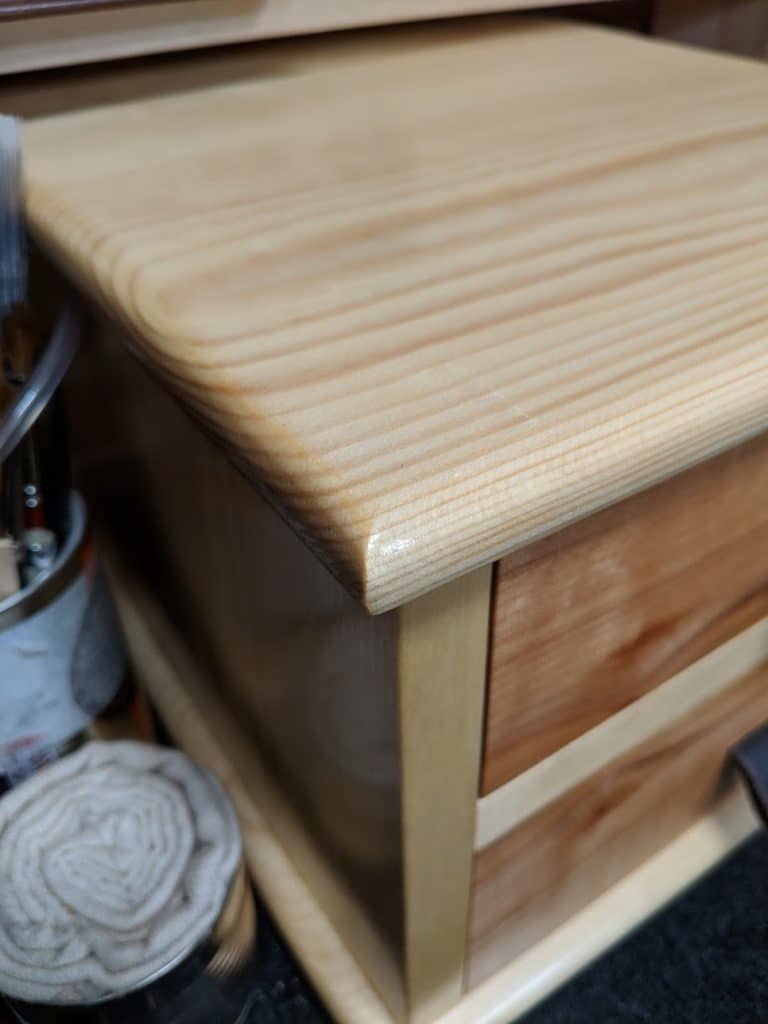
I’m not complaining when I say that filming does not come without invasion. We all work sensitively around one another to allow the artistic licence we need to make good videos and good projects. My workspace is more interesting than most, I think. If you think about all that we have made in no more than an 8 foot by 8 foot of floor space it defies belief. From cots to dining tables, beds, coffee tables and even the more recent workbenches. These dozens of projects were designed to defy the false view that you cannot do good and efficient woodworking using hand tools. Many wanting to do woodworking that were put off are now finding their lives changed as they establish skills they could only ever dream of. I mean woodworkers new and seasoned are perpetuating skill in the doing of it and this is how I can gauge my own successes. Of all the ones we have made I think that what amazes me the most still is the minimal use if any of any machines. You’ve never seen me use a motorised router but you’ve seen me use a simple hand router plane. Therein is the difference between myself and the others. In reality, it is most likely that 99% of you never saw the hand router used before you saw me using one and showing its versatility. When you did, you believed in it and you bought it. When no one seemed ever to use one before, I found it amazing that no one begged the question, ‘Why is that?’
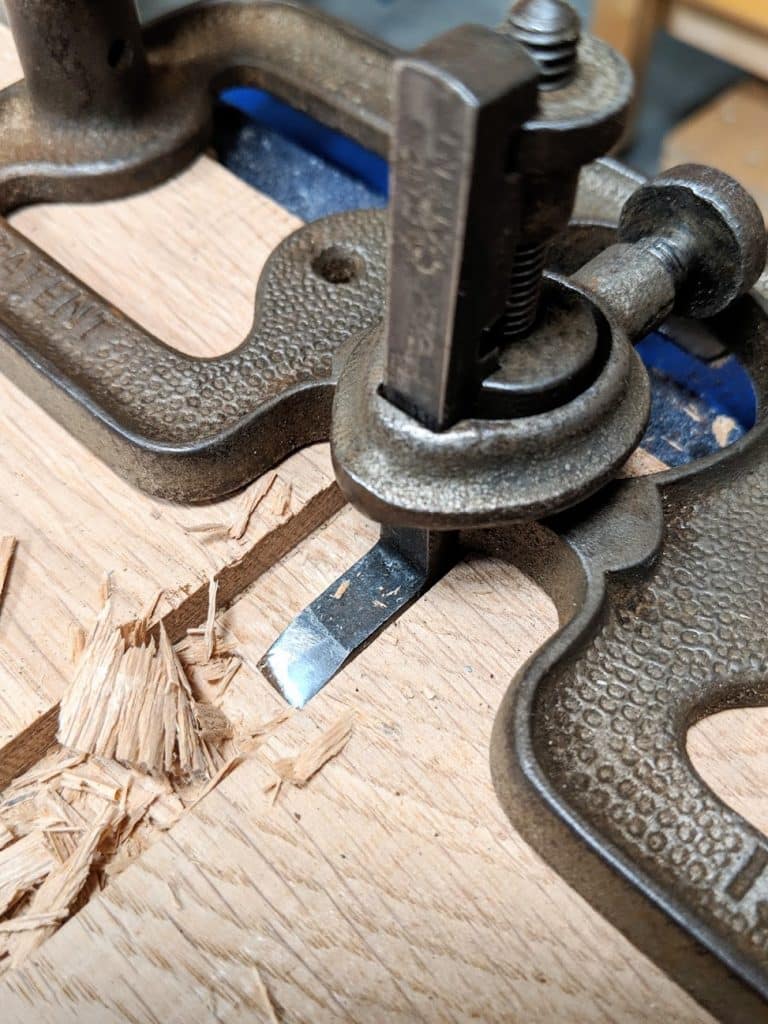
Up until five years ago router planes by Stanley and Record sold for around £10 on eBay. It was when I started to demonstrate the functionality of the router plane to its fullest extent, expose it to the wider world of real woodworking, the prices steadily rose. Now they exceed £100 and that’s directly because of my working with them. In fact, even major producers of premium router planes have difficulty keeping up with stocks as a direct result of our efforts. My success teaching and training means success for all even though they would never admit it.
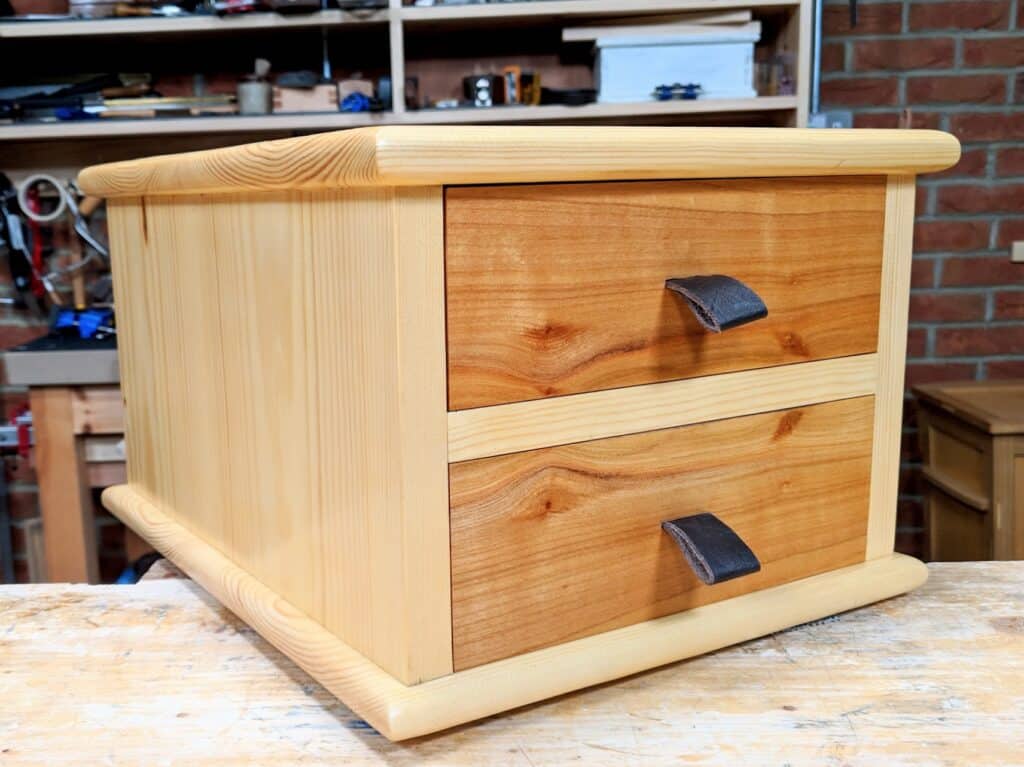
I suppose what I am saying is that this simple project has an amazing amount of teaching in it as do all of our videos and how-to efforts. The same is true of plough planes too. Whereas many people are amazed that anyone uses such tools, I am amazed that people who call themselves woodworkers don’t. Join thousands of friends with a free subscription to our woodworkingmasterclasses.com. We keep expanding our woodworking efforts as an all inclusive group. You’ll love it.
So, why Value Added Quiz. Tomorrow I am going to ask you questions about my decisions in the design and making of this project. To see if you can answer the key issues I built into the design. We’ll see how you fair!


“When no one seemed ever to use one [handrouter] before, I found it amazing that no one begged the question, ‘Why is that?’”
I ask myself that same question when it comes to eggbeater handdrills and Stanley Yankee pump-action screwdrivers. They’re the tools I enjoy using the most, not just in woodworking but also general DIY work around the house. My wooden router is near the top of the list too. I have to be satisfied with a wooden router for the moment, but it does the job. Hard to find metal handrouters that are affordable. And finally, finally found a #5 plane last week, after years of looking for one. It is a Stanley Handyman though, but in good condition. I wonder how you would feel about using a Handyman plane in your daily work. Could you do just as good work with it as with a Stanley-Bailey #5? Is it tool-snobbery to not consider the Handyman a ‘real’ plane? I think that at the moment and for a good while to come I’m still at the stage where the tools aren’t the limiting factor but I am, so perhaps it’s good to use a lesser #5 first
Hi Nemo,
My No. 5 is a mish mash of two broken Stanleys. One was definitely not a collectible. Guess what? It works a treat anyway. Now that I have cleaned it up and assembled it from the collection of parts it is staying with me until I can’t use it anymore.
Only issue with the Handyman line is they did not get attention of the higher lines when it comes to QC. As long as the frog seats solid fore and aft it will be a good plane. If the toe is not sitting in the sole it can develop chatter issues do to the frog rocking. That is can be resolved with a bit of bondo and effort.
Thanks for the replies. I know the Handyman line isn’t highly regarded by many, but so far I find it works ok – but then I’m only a beginner and perhaps not too discerning. The frog looks solid but I did replace the depth-adjustment knob though, as I found the smaller diameter of it made it awkward to adjust. The Handyman line doesn’t have the throat-adjustment screw, but to be honest, I have never (yet) used that screw on my regular Bailey-type planes either. Also noticed that, despite the fact that the Handyman #5 is 12 cm (5″) longer than a regular #4, it weighs only 100 grams more, so the Handyman casting is pretty light. But the sole is flat and it planes fine, without having sharpened it yet. All my other planes required some fettling/meddling so I don’t mind doing a little bit of work on it. Will refinish the tote and knob and sharpen the blade and then simply start using it, I suppose. Was worried I was becoming a tool-snob and reading too much into other people’s dislike for the Handyman. Hence my question, as I know mr. Sellers has a pretty down-to-earth, practical approach to tools. But then again, I don’t recall seeing a Handyman plane in his collection….
Also I have, besides others, a Stanley Handyman nº 1205 and a Stanley Bailey nº 3 with a Handyman blade. I use both with a low blade set. They work very, very well. The No. 1205 has the sole square with sides and # 3 is a patchwork of two other Stanley Bailey and Handyman. They are very good.
Hi Paul;
As an occasional woodworker over 64 years (yes since 1955 when I bought a Stanley rabbet plane to build a lapstrake row boat out of pine) I used chisels, hand saws and rarely a smoothing plane until you inspired me to sharpen up my No.5 Stanley Jack plane and then we looking for a number 4 Stanley, beauty with corrugated bottom which I found on e-bay. Since then I found a “new” Record No.3 with factory tag still attached at a flea market in downtown Vancouver,BC and later an Accord No.6 (made in India ) at the same flea market. My Rockwell 9″ table saw was a new purchase in 1973 and then 12 years ago I discovered the band saw, great for making circular cutting boards. But you have inspired me to now think about hand making dovetail joints, You make processes look easy ? Keep it tuned and sharp. Yes, what a difference !
David Middleton, North Vancouver /originally from Québec City.
My son and I have a 8 x 8 space in our post frame barn we use year-round to build furniture, including a 9-drawer dresser that measures 54″W x 38″H x 18″D all using hand tools. Hand tools definitely help when needing to minimize floor space.
Lifetime machine woodworker here. Count me among those who didn’t know what a hand router plane was until I watched your videos. Now I have a large and medium Veritas Router Plane which I love. I just finished your Hanging Wall Shelf. Then yesterday milled the material for the Tool Tote. I couldn’t believe how fast I knocked out the 6 housing dados. I’ll glue it up tomorrow.
Jim
PS: My Veritas Plough Plane arrives Tuesday. then it’s on to the Wall Clock!
I’ve made many dadoes using Paul’s technique and not one loose fit. I never had results like this using powered tools. It’s amazing what a knife wall can do for accuracy!
I find all that you write such an inspiration. I have loved woodworking from afar for years, since a child. I took woodshop in Jr. HS.
When I retired, 10 years ago, I took up the hobby. I used machine tools, influenced by The New Yankee Workshop show, Norm Abrahams. I stopped due to health limitations, but you have inspired me again. I will start with hand tools, which makes much more sense at this stage in my life.
Thank you.
I love your writing.
I feel you are a good, sincere caring human being.
I’ve had my old Stanley 71 for years, and even an older (200yrs) plow plane that absolutely saves time over setting up a power router or dado blade on my table saw when I just need a small dado for a cabinet back or such.
I turn 60 in a couple of months and told my wife all I want is for one of my Granddaughters to make (under her instruction) me a Paul Sellers oil rag-in-a-can. There is a young (compared to us) Japanese wood worker on-line named Ishitani, who not only does beautiful work, but films beautiful videos about the process. I noticed he uses an oil rag can and I believe he must have gotten to idea from you.
Yes, Ishitani’s site is quite nice. I found him before I came across Paul, and while Ishitani’s is beautiful to watch, it is here where I actually learn.
Still using power tools for the heavy work. I use almost all used, recycled wood. With a bad heart, it allows me to get things done that otherwise, I wouldn’t. But now having collected a nice basic. Set of hand tools, and using them. Has made my work much easier and more pleasant. Still want to get the hand router. Thanks Paul.
Steve
It might at some point be worth putting together a “blooper reel” showing that Paul too does make mistakes at times, and perhaps discussing when/how to recover from them vs. just trying again. One of the mental barriers some of us face is the fear of “ruining it”, especially in more expensive wood. A reminder that many mistakes can be recovered from, hidden adequately, or adjusted around might help overcome that.
The problem I see is that you would be waiting two or three years between my mis-takes!
Good reply. And I might add, most likely true. I’ve had a Stanley 71 for a few years but my have a smaller Veritas on the way. And yes, I learned of router planes from you. Thanks !
Watch some of the earlier videos. While the editing is not as sharp, you get to see Paul talking through fixing things and or solving them before it is an issue. The chest of drawers he also goes over some common issues like void filling.
“Therein is the difference between myself and the others.”
There is a more important difference: Your methods work. I won’t name names or give enough details to raise a ruckus, but another handtool demonstrator from a different continent demonstrated how to make a piece, and after some thought, I decided the method just couldn’t work. It would be impossible to adjust and fit the drawer. He left zero room of the fitting stage or even accounted for planing dovetails flush. When you do something, I might wonder how closely it matches traditional methods, but I never have any doubts about it working. I know, if I run into trouble, it is because I am learning and developing, not because the method is wrong or requires superhuman abilities.
Having us identify why you are doing what you do in the design is an excellent, A+ idea!
I have long had a preference for “vintage” hand tools. I enjoy tuning them up and putting them to use. I like the idea that they are being used instead of sitting and collecting dust somewhere, or worse yet in a landfill. The only tools I have bought brand new has been a set of Narex Chisels, which work great, and a Verias router plane. I bought the chisels early on in my hand tool journey. The router plane is brand new because I couldn’t bring myself to spend almost as much for a used plane as I would have for a new one.